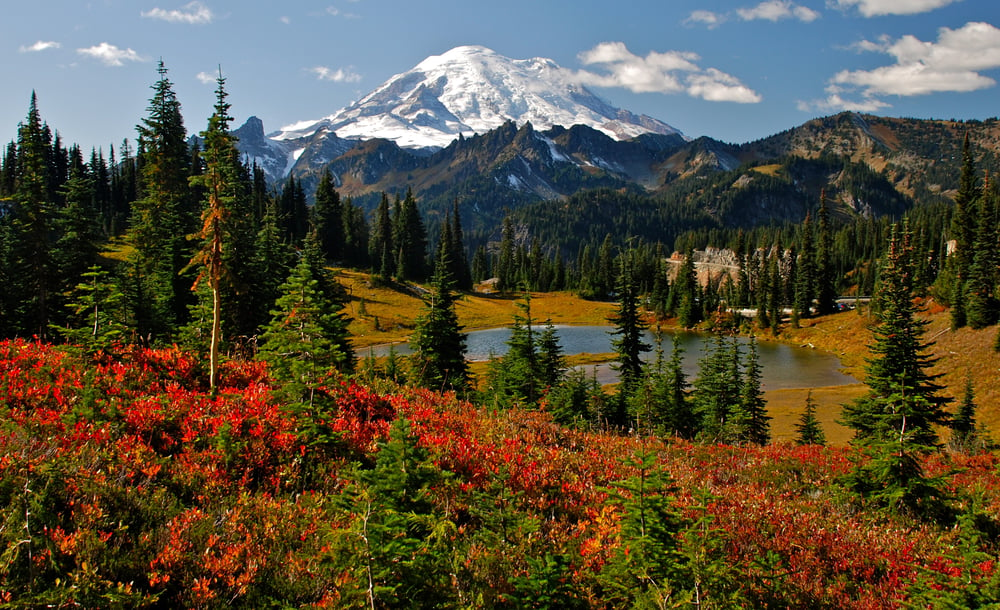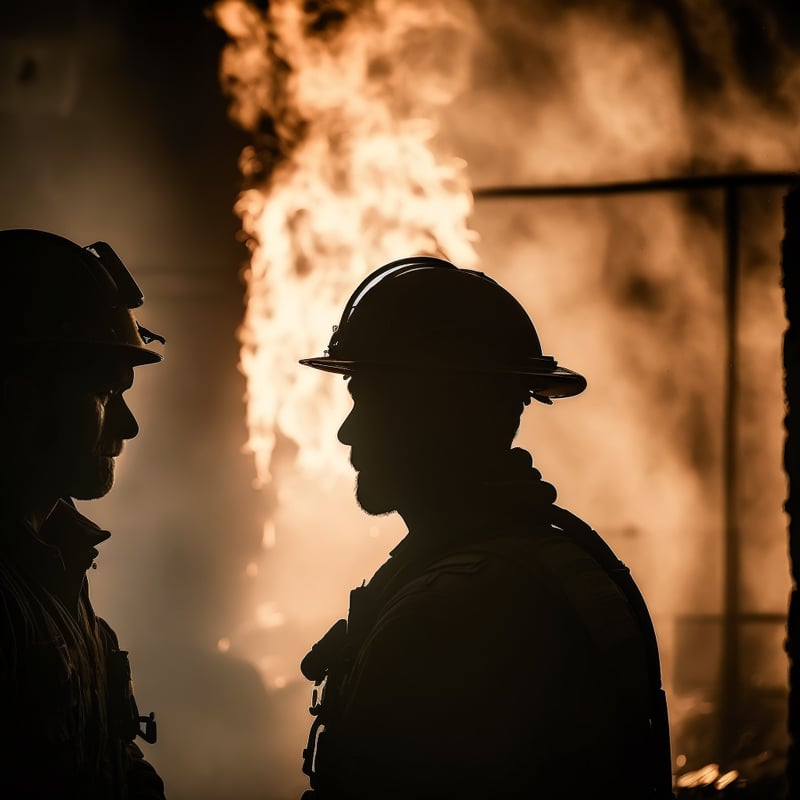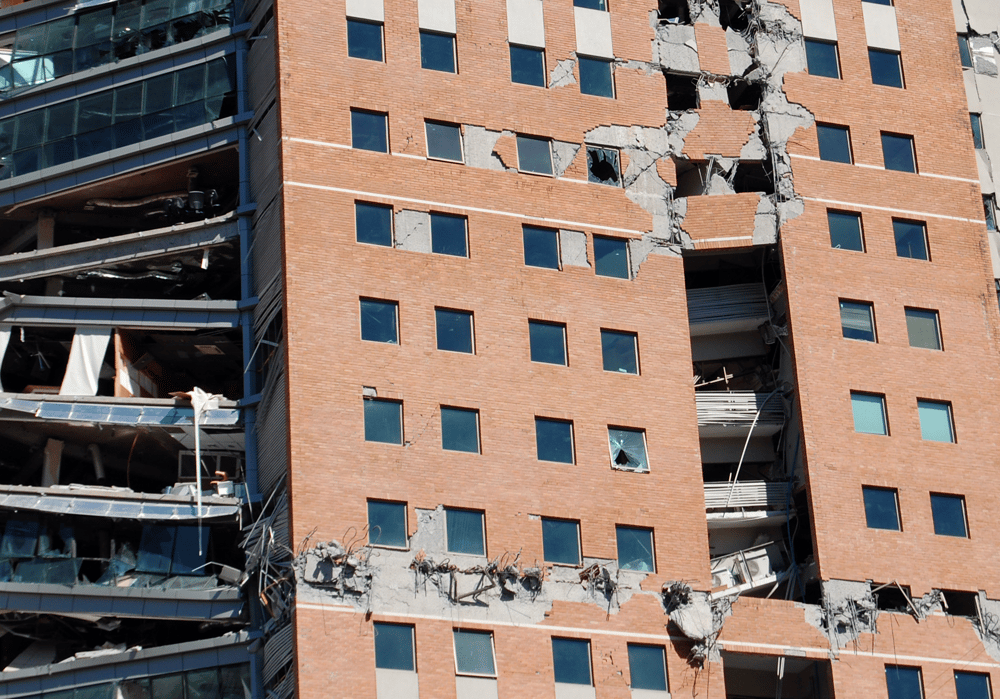Underwriting Property: A Guide to Fire and Earthquake Risk
Go in-depth on major property hazards in Washington state

How to use this guide
In this guide, we describe some of the biggest hazards to property in Washington state and offer ways underwriters and raters can better understand those risks. Throughout, we provide links to additional articles from our blog so you can dig deeper into each one.
For more than 100 years, we've been inspecting properties and evaluating communities to help insurance companies understand and underwrite risks. Our original focus was producing data related to fire risk, but we've expanded and now also cover earthquakes. We're building new tools to assess other property risks, and as we do, we'll add to this guide.
We're an independent, not-for-profit organization operating in the public interest. We serve insurers and insurance consumers in Washington state, so this guide concentrates on underwriting issues relevant to Washington. Learn more about what we offer here.

Fire
A fire can severely damage or even destroy property. The flames themselves are destructive, as are the smoke and heat. Depending on how the fire is extinguished, water damage also can result. All that damage adds up and makes fire one of the most expensive perils to property. Consider the following:
- Every 66 seconds, someone in America reports a structure fire.
- When smoke-damaged parts of a property need replacement, the cost is often the same as if the damage had been caused by the flames.
- Unattended cooking is the most common cause of residential fires; heating equipment is the second most common cause and electrical problems third.
- Lower smoking rates mean fewer total residential fires due to cigarettes or other smoking materials. However, fires remain more common in smokers' households than in those owned by non-smokers'.
Taking a closer look at fire risk and prevention
When evaluating a property, it can be useful to understand factors that may increase or decrease the risk of fire-related property damage. For example, the presence of a properly designed and maintained automatic fire sprinkler system has been shown to significantly reduce damage caused by fires. They're more common in commercial properties but are also available for homes.
Functioning fire alarm systems are also essential risk-mitigation devices, but one common complaint with these systems is false alarms. Fortunately, new technology in these devices will soon distinguish more effectively between smoke that signals a real fire and smoke resulting from a nuisance, such as burned toast. They'll also do a better job of detecting fires caused by polyurethane foam, a material that has become increasingly common in furniture, flooring, and appliances.
The specific conditions of a commercial property or home, along with the behavior of people working or living there, can also affect fire risk and the extent of damage likely to occur.
Registered WSRB users who are underwriting a commercial property in Washington state can login and review our inspection reports. Our skilled analysts visit the property in person to give you detailed information, including images and diagrams related to fire risk.
For any property in Washington state, our protection class (PC) data gives insight into the fire-defense capabilities of the local community. Registered users can login and get PC data anytime. For instructions on how to find a PC, click here.

Earthquakes
The Puget Sound area is likely to see a significant earthquake in the next few decades. Although the exact damage to property is unpredictable, understanding the key factors that contribute to earthquake damage can help.
No single factor provides a complete picture of the earthquake risk to a specific property but taken together, the following measures give you deeper insight than any factor does individually.
The Modified Mercalli Intensity Scale (MMI) describes the strength of shaking at a particular location, making it different from the Richter scale in ways that are especially important to property insurance professionals. The Richter scale measures how much energy the quake released at just one place: the epicenter. The MMI tells you the observed effects at many specific locations.
For example, the lowest MMI, I, corresponds to "Not felt, except by a very few under especially favorable conditions." The highest MMI, X, corresponds to "Some well-built wooden structures destroyed; most masonry and frame structures destroyed with foundations. Rails bent."
Using data from past earthquakes, seismologists have developed models that estimate future probable MMI levels.
Susceptibility to soil liquefaction describes how likely the soil under a building is to liquefy during an earthquake. Liquefaction can cause or contribute to property damage and sometimes building collapse, and the damage can show up many miles away from the epicenter of the quake. The 2001 Nisqually earthquake, magnitude 6.8, was centered just off the coast of Anderson Island in Puget Sound, but liquefaction-related damage occurred miles away at the northern end of Boeing Field, near Green Lake and on Harbor Island.
Many properties in Western Washington are at risk of tsunami inundation. Maps illustrating this risk are most often used to plan evacuation routes, but insurance professionals can use them to assess the risk of damage. The maps are developed using intricate computer models based on bathymetry (the measure of depths of bodies of water), topography, seismological studies, empirical evidence and more. Learn more about tsunami risk here.
Some parts of Washington state are susceptible to lahar, a type of fast-moving mudslide that can cause major property damage. Lahars typically occur after a volcanic eruption but can also be triggered by an earthquake.
Data on all these risk factors, along with the distance to fault, is included in QuakeScout. This tool is designed to help principals grow their agencies by making cross-selling earthquake coverage easier than ever. Also offers valuable insight for underwriters because earthquakes are a major risk factor for fire.
Registered WSRB users can login and try QuakeScout today.
Another risk factor for earthquake property damage is whether a building has a soft story — that is, a first floor with large open spaces below the main floor. Three common examples are:
- Parking garages below apartments.
- Retail showrooms below two or more residential floors.
- Homes with crawl spaces on the ground floor that are tall enough to stand up in.
These soft stories are rarely strong enough to protect the building from side-to-side shaking. However, buildings can be retrofitted to reduce the risk soft stories present.

Still have questions?
We hope this guide and the linked articles gave you new insight into property underwriting. If you still have questions about fire and earthquake risk in Washington state, contact our Customer Service team.







